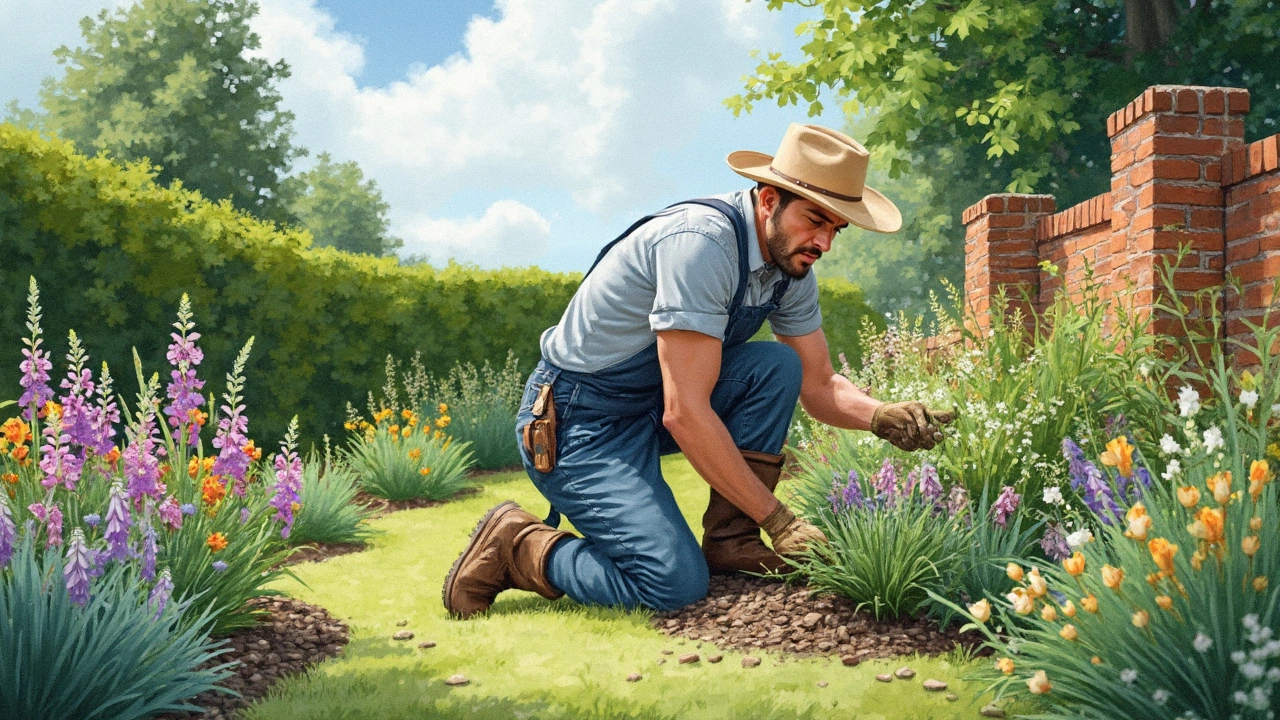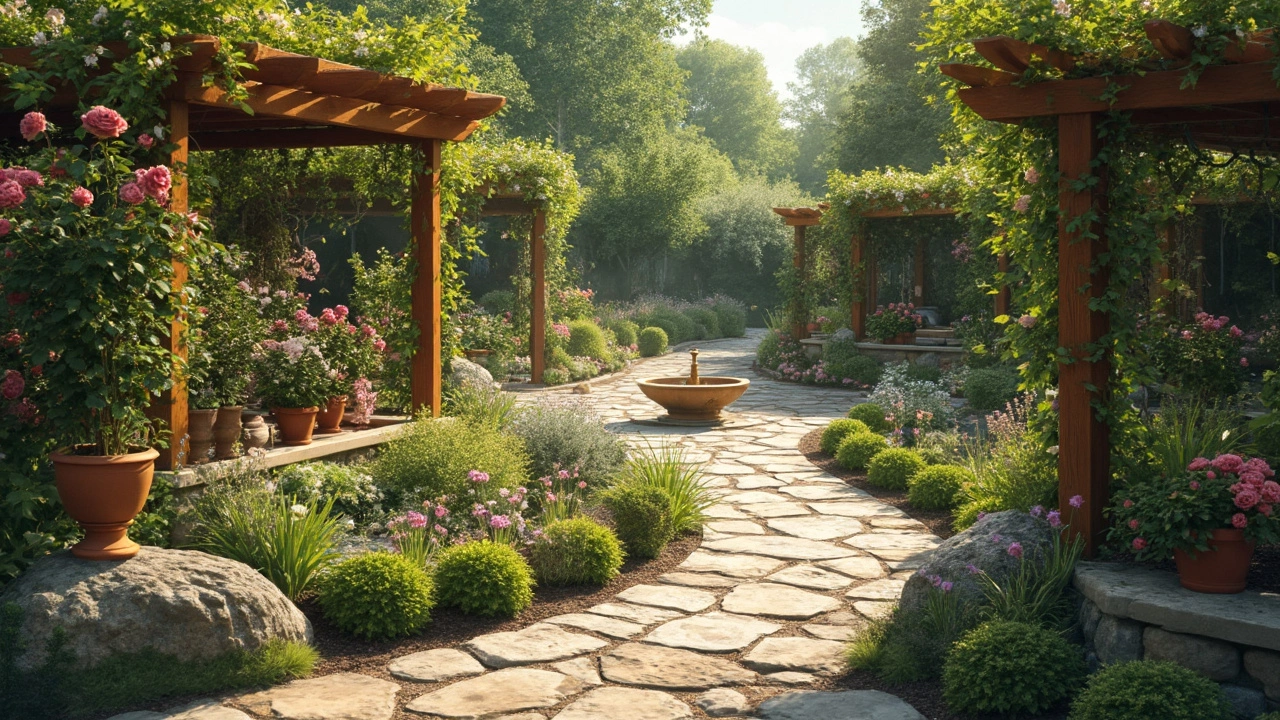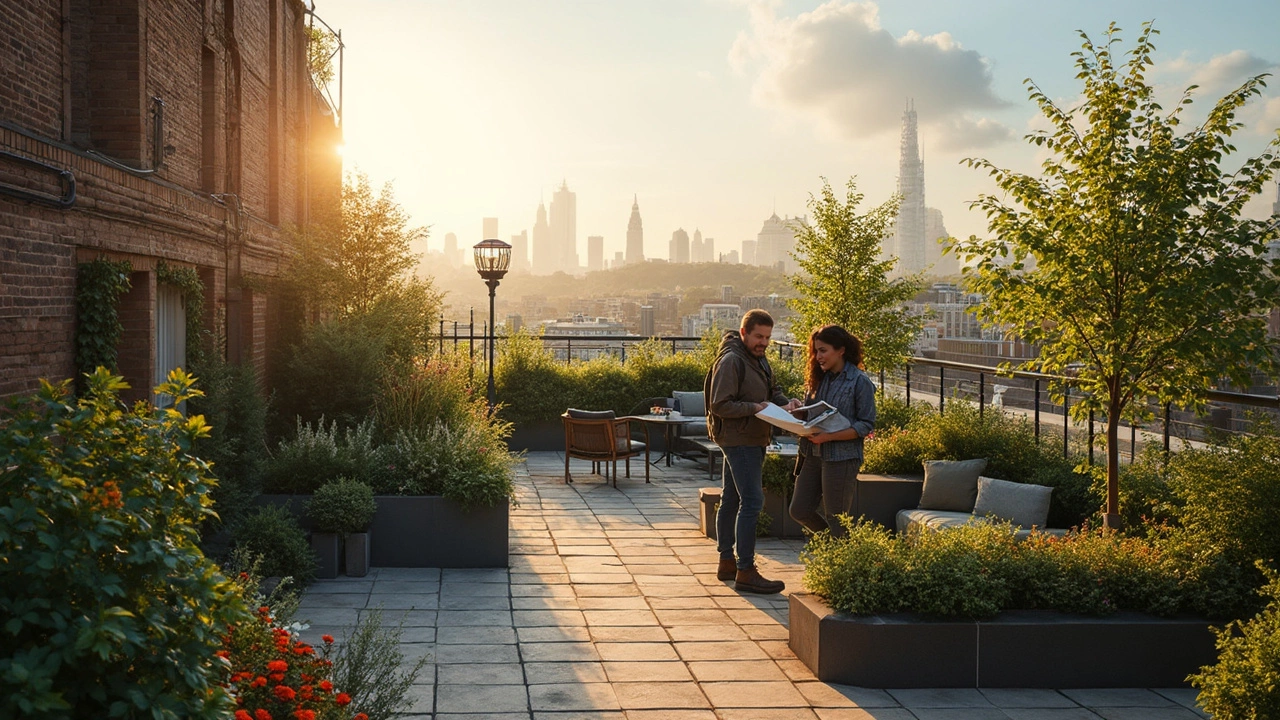What Does a Landscaper Actually Do?
 Mar, 13 2025
Mar, 13 2025
Ever wonder what a landscaper really does besides planting a bunch of flowers? These folks are like the unsung heroes of our outdoor spaces. They don't just slap some green stuff onto your yard and call it a day. From designing to maintaining, a landscaper wears many hats, and trust me, it's a lot more interesting than you might think.
For starters, landscaping is all about creativity meeting practicality. Think about it like this: a landscaper is part artist, part construction worker. They start by designing a space. This involves creating plans that blend nature with your lifestyle. These pros listen to your vision, factor in environmental elements, and might even use software to map out how your dream garden will come to life.
- Understanding the Basics
- Designing Your Outdoor Haven
- Building and Creating
- Maintenance and Care
- The Impact of a Landscaper
Understanding the Basics
So, you’re curious about what a landscaper actually gets up to? Let's break it down from the ground up. At its core, the job of a landscaper is to transform outdoor spaces into something stunning and functional. But there's more to it than just good looks—safety and sustainability are key, too.
Key Responsibilities
A landscaper might begin their day by assessing a site. This means looking at soil quality, the local climate, and existing plants. This groundwork is critical for developing a landscape that thrives. But how do they do it?
- Site Analysis: It’s about taking stock of the land. What challenges does it have? Are there steep slopes or poor drainage? These factors will guide the rest of the project.
- Design: Next up, creating a plan. This involves sketching out ideas, which could be done by hand or using design software, depending on the landscaper’s tools. It's like putting together a puzzle with nature.
- Budgeting and Planning: No two projects are the same, so nailing down the costs and timeline is crucial. A landscaper needs to ensure resources are available when needed.
Skills Required
Landscaping is a hands-on gig. Sure, you need creativity, but you also need to know your way around tools and plants. Plus, understanding eco-friendly practices is becoming more essential. This includes knowing stuff like which plants use less water—perfect for those dry areas.
| Skill | Why it's important |
|---|---|
| Botany Knowledge | Helps in choosing the right plants. |
| Technical Skills | For construction and maintenance tasks. |
| Design Flair | Essential for creating beautiful, balanced spaces. |
Without a doubt, landscaping services play a pivotal role in creating attractive, safe, and sustainable environments. By understanding the basics, we can better appreciate the art and science behind every well-manicured garden or vibrant public park.
Designing Your Outdoor Haven
Designing your outdoor haven is where the magic starts. A landscaper uses their skills to transform a simple patch of grass into a living masterpiece. Whether you want a sprawling yard, a cozy patio, or just a lush green garden, the first step is dreaming up what the space could be.
The Vision and Planning
First things first – it’s all about envisioning. This is where a landscaper sits down with you and chats about your needs and wishes for the space. Maybe you want a space for kids to play, or perhaps a peaceful retreat from the daily grind. Landscapers consider all these factors to create a balanced design that looks good and functions well.
The Tools of the Trade
To bring these ideas to life, landscaping services often involve using some high-tech tools. Software like CAD (Computer-Aided Design) helps to model the project. This lets you see a virtual preview of your outdoor haven before a single sod is laid. It's like test driving your new garden from the comfort of your home!
Elements to Consider
- Plant Selection: Depending on your climate and soil, certain plants will thrive better than others. Landscapers choose plants that suit your environment while adding beauty and harmony.
- Hardscape Features: This includes walkways, patios, or even water features. These aren't random addons; they’re essential for navigating your space and adding structure.
- Lighting: Outdoor lighting can make or break your backyard vibe. It’s about highlighting features, ensuring safety, and creating the right atmosphere at night.
- Irrigation: Keeping those plants healthy is key. A landscaper designs an irrigation system that ensures your plants get the right amount of water without wastage.
The Budget Talk
Budget is a huge factor in any design. A landscaper helps in outlining what you can realistically achieve with your budget. Breaking it down, they can show you which elements might need more investment and where you can afford to save.
Eco-Friendly Touch
With the focus on sustainability, many landscapers now incorporate eco-friendly designs. This could mean using native plants that require less water or installing rainwater collection systems. An outdoor space can be both beautiful and kind to the planet.
By the end of the design phase, you’ll have a clear plan that sets the stage for the building process. This is where your manifesto for an outdoor paradise finally takes shape.

Building and Creating
Once the design blueprint is ready, a landscaper shifts gears to the hands-on part—actually building and creating your dream landscape. This stage is where the magic happens, transforming plans on paper into a vibrant living space.
Site Preparation
The first step in building is preparing the site. It's not just about clearing the land; it's about creating a solid foundation. Landscapers might need to level the ground or install drainage solutions, ensuring water doesn’t damage the garden.
Hardscaping: The Backbone
Hardscaping involves all those non-plant elements like patios, walkways, and retaining walls. These features add structure and can define gathering spaces. With materials ranging from stone to wood, the choices affect both aesthetics and function.
Plant Installation
This is the part where most think a landscaper just starts digging holes for plants. But it’s more strategic than that. Selecting the right species for the climate, considering growth patterns, and arranging plants according to sunlight availability are all crucial steps.
Irrigation Systems: Not Just a Sprinkler
An effective irrigation system is like the lifeline for your landscape. Landscapers install systems to ensure your plants get the right amount of water without wastage. It might involve sprinklers or drip irrigation, tailored to the specific needs of the garden.
Did you know that proper irrigation can reduce water waste significantly, sometimes by over 50%? This not only saves on bills but also helps the environment.
Lighting: Setting the Mood
Landscape lighting can transform a space entirely once the sun sets. By choosing strategic places to install lights, landscapers ensure walkways are safe and that your garden can be appreciated even at night.
| Task | Purpose |
|---|---|
| Site Preparation | To establish a strong foundation |
| Hardscaping | Provide structure and definition |
| Plant Installation | Enhance aesthetic and growth balance |
| Irrigation Systems | Efficient water use for plant health |
Maintenance and Care
Alright, let's dive into one of the most critical parts of a landscaper's job: maintenance and care. You know, your garden or outdoor space isn't just set-and-forget. It needs regular TLC. This is where a landscaper steps in as your yard's personal caretaker.
Keeping It Green
The first thing on the agenda is making sure everything stays lush and green. This includes properly watering your plants and grass. Sure, it sounds simple, but there's more science to it than just turning on a sprinkler. Different plants have different water needs, and a landscaper knows how to strike the perfect balance so you don't over or under-water them.
Pruning and Trimming
Next up, your shrubs and trees. They need regular pruning and trimming to keep them in shape and promote healthy growth. It's not just for looks, either. Pruning helps prevent diseases and pests, giving your green friends a longer, healthier life. Landscapers know exactly when and how much to trim so that your plants thrive.
Weed and Pest Control
Weeds are like the uninvited guests that just won't leave. And pests? Well, they're the nightmare for any garden. A good landscaper has a plan of attack for both. They use techniques and products to control these nuisances without harming your plants or the environment.
Seasonal Changes
Ever notice how some gardens look good all year round? That's not just luck; it's planning around seasonal changes. A landscaper knows when to plant certain flowers to ensure something's always in bloom. They'll also prepare your garden for different weather conditions, whether that's laying mulch before winter hits or choosing drought-resistant plants for hotter areas.
| Task | Frequency |
|---|---|
| Watering | Daily to weekly |
| Pruning | Quarterly |
| Weed Control | Monthly |
| Pest Checks | Monthly |
Remember, keeping your outdoor space looking fab requires regular upkeep. And while it might sound daunting, having a skilled landscaper in your corner makes it all manageable. They take care of the nitty-gritty so you can kick back and enjoy your garden oasis.

The Impact of a Landscaper
Ever thought about how a landscaper can change the vibe of a place? It's not just about planting trees and mowing lawns. The real magic happens when those efforts start to impact the environment and the people using that space. We're talking about real change here — both visual and environmental.
Boosting Property Value
One of the most immediate impacts a landscaping project can have is on your property's value. A beautifully designed garden or yard can boost curb appeal significantly. Some real estate experts believe an attractive landscape can add as much as 15% to the value of a home, making it a smart investment if you're thinking of selling.
Environmental Benefits
But there's more to it than just dollars and cents. By thoughtfully planning and planting using native plants, landscapers can reduce water usage and maintenance costs. Better still, adding trees and shrubs can assist with local biodiversity and help cool urban areas. Trees, in particular, play a crucial role in absorbing carbon dioxide and providing oxygen, which is a big plus for our planet.
Community & Personal Well-being
On a more personal level, well-maintained outdoor spaces have been shown to improve mental health. It's not just about having a pretty view; being around greenery and nature somehow makes us feel more relaxed and connected. Some studies suggest that spending time in landscaped environments can lower stress levels and promote well-being.
| Benefit | Impact |
|---|---|
| Property Value Increase | Up to 15% |
| Water Savings | Up to 50% with native plants |
| Tree Planting | 1 mature tree absorbs 48 lbs of CO2 annually |
So next time you look at a garden or a landscaped outdoor space, think about the broader impact. It's not just a bunch of green stuff — it's a powerhouse of benefits that can improve lives, the community, and even the planet in surprising ways.
